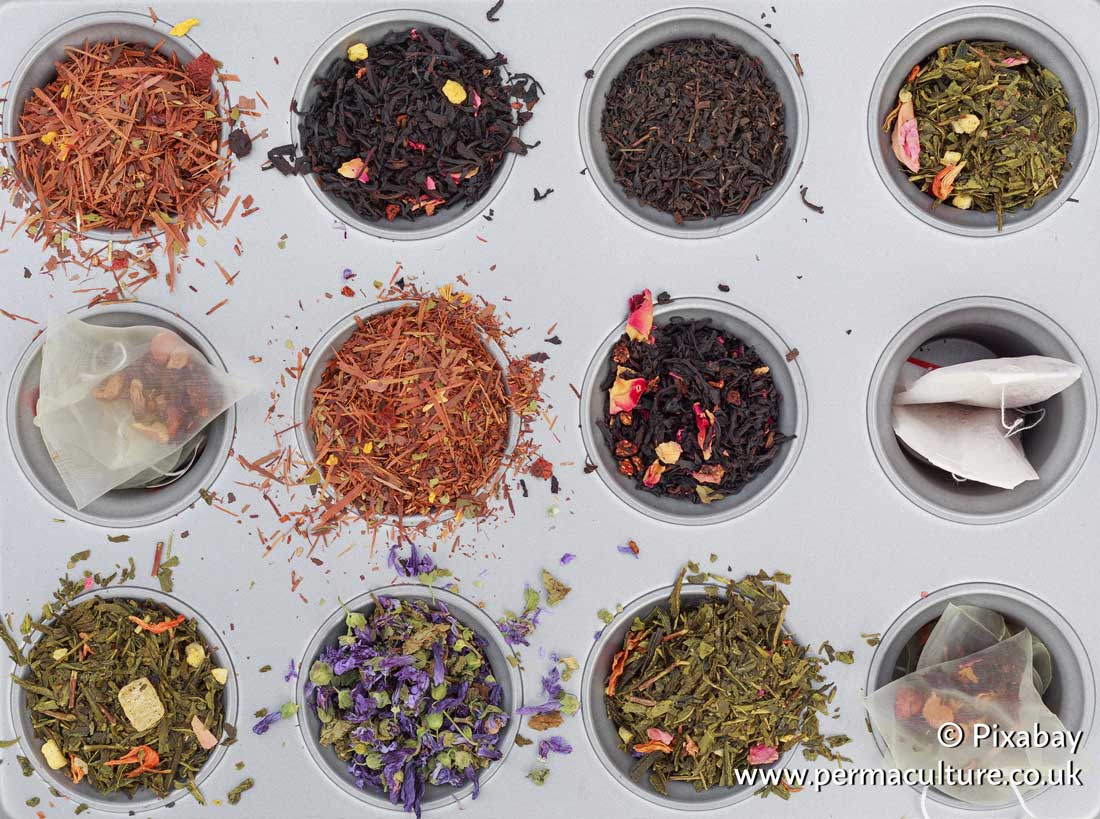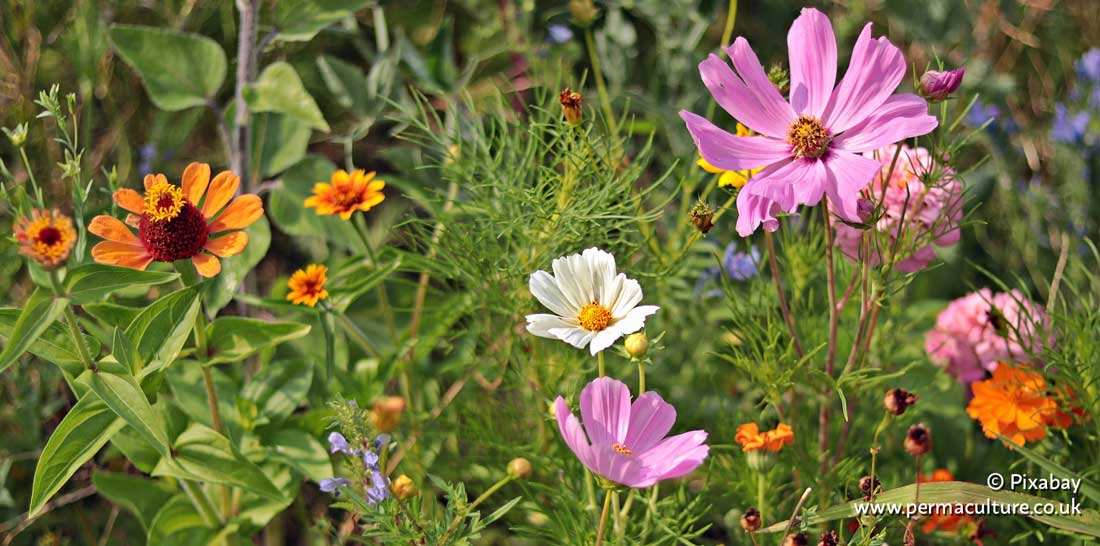Alder buckthorn (Frangula alnus) is an attractive small European tree that buzzes with bees and other insects, having traditional use of the bark as a laxative and new possibilities in viral and degenerative diseases.
Alternate names: Alder dogwood, black alder, glossy buckthorn
Parts used: Bark
Alder buckthorn is a deciduous shrub or small tree, erect and slender, growing to 5m by 4m at a slow rate. Leaves are alternate and have smooth wavy edges. Flowers are produced from May to June and are hermaphrodite and pollinated by insects. Small black fruits containing seeds ripen September to November.
Native to Europe from southern Scandinavia to north Africa, the Urals and Siberia.
Purging buckthorn (Rhamnus cathartica) is another European buckthorn, has spiny branches, and is more likely to be found in calcareous soils. R. californica, coffeeberry, is evergreen growing to 5m in western North America, with a dwarf shrubby habit. The bark of R. purshiana of western North America is the source of Cascara sagrada, a worldwide commodity promoted for use in constipation. Alder buckthorn provides an alternative to the use of R. purshiana which is on the UPS ‘Species-at-risk to watch’ list. Alder buckthorn is not related to alders (Alnus species).
Alder buckthorn is hardy to USDA zone 3 (UK zone 3) and will grow on any reasonably good soil, though it does well on an acid soil. It can grow in semi-shade or no shade, and prefers a moist soil. It dislikes drought, exposure to high winds and a waterlogged soil. Alder buckthorn can be coppiced and regenerates well. A close relative, R. purshiana, can be readily coppiced if cut down to within 30cm of the ground, producing new shoots and flowering and fruiting within 3-4 years.
The alder buckthorn is associated with crown rust which can affect grasses and cereal crops. It is considered invasive in north-eastern US states and eastern Canada and some states restrict it as a noxious weed.
Harvest the ripe black berries in autumn, if necessary taking these several weeks early to prevent losses to birds. Place the berries in dry sand in a box and allow to ripen. Rub the berries in sand to release the seeds and spread the mixture direct onto a seedbed in a cold frame. Stored seed requires 1-2 months’ cold stratification at about 5oC (41oF) and should be sown as early in the year as possible in a cold frame or outdoor seedbed. Prick out the seedlings into individual pots when they are large enough to handle, and grow them on in the greenhouse or cold frame for their first winter. Plant them out in late spring or early summer of the following year. Softwood cuttings can be taken in early August and placed in a frame. Layering in early spring.
Young bark of alder buckthorn is collected in early summer from branches and dried. It must be stored for at least one year before use to remove harsh constituents.
Both alder buckthorn and purging buckthorn have long been used for the cathartic and laxative effects of their bark and berries. The berries of purging buckthorn were once used to provide a nauseous bitter juice prepared as Syrup of Buckthorn. A pamphlet of the 1740s published by John Juxton explains that the ‘Syrup of the Berries of Buckthorn are [sic] much in use and prepared at many Gentlemens Houses, and good Housekeepers, and likewise sold in the Apothecaries Shops’, although he was advertising his own product as he claimed that his pills were stronger and cheaper than the ‘bitter, heavy syrup’. Alder buckthorn provides a milder action than purging buckthorn. The bark used to be boiled in ale by country people for jaundice, and it was also used as a tonic for the intestines and for relieving haemorrhoids. The alder buckthorn bark has been used in the UK as a substitute for Cascara sagrada.
The bark is laxative, cholagogue and tonic and is mainly used for chronic constipation. The bark contains anthraquinones which are inactive in the gastrointestinal tract until they reach the colon, where they are degraded by bacterial enzymes; within about six to eight hours this causes vigorous peristalsis. Other actions of alder buckthorn include antimicrobial, antifungal, antiviral and insecticidal.
Alder buckthorn leaves and bark have shown promise for their therapeutic effects. The high levels of hydroxy-benzoic acids and flavanols in alder buckthorn bark have been considered for use against staphylococcal local infections. The constituent emodin, an anthraquinone derivative, has been shown to inhibit replication of the herpes simplex virus, an effect comparable to acyclovir. Furthermore, anthraquinones can inhibit the abnormal aggregation of tau proteins in paired helical filaments which is a hallmark of Alzheimer’s disease. In a study of a related species of buckthorn, R. alaternus, a methan-olic extract proved cytotoxic to human monocytic leukaemia cells.
For constipation, 0.5-2.5g of alder buckthorn dried bark is taken directly in capsules or in decoction at night. Tincture 0.5-2.5ml administered at bedtime for constipation.
Contains anthraquinone derivatives, flavanoids, tannins and peptide alkaloids.
The main active constituents are hydroxyanthraquinone glycosides (emodin, frangulin, iso-emodin, aloe-emodin, and chrysophanol). The bark contains a minimum of 7% glucofrangulins.
Commercial preparations of alder buckthorn are standardised to contain 20-30mg hydroxyanthracene derivatives (glucofrangulin A) to be taken at bedtime or in two divided doses in the evening and morning.
Do not use fresh bark which contains anthrones and can cause severe vomiting. Avoid use in people with nausea or vomiting, inflammatory bowel disease, appendicitis, intestinal obstruction or acute intestinal inflammation. Not recommended for use in children under 12 years of age. Use of this remedy may colour the urine orange. Long-term use as a laxative is not advised as dependence may result. Due to insufficient data, this remedy should not be used during pregnancy or breastfeeding.
Alder buckthorn is the source food for caterpillars of the yellow brimstone butterfly (Gonepteryx rhamni), and it is attractive to bees and other insects. Dye plant. Charcoal making.
—
This is an extract from Anne Stobart’s The Medicinal Forest Garden Handbook, an extensive handbook with practical information on growing, harvesting and using medicinal trees and shrubs sustainably in a temperate climate, whether for self-sufficiency or profit.
The Medicinal Forest Garden Handbook
by Anne Stobart
Everything You Need to Know About Hawthorn (Crataegus monogyna)
Anne Stobart is a medical herbalist and herb grower based in Devon, UK.
She is the author of The Medicinal Forest Garden Handbook and runs various medicinal courses.











